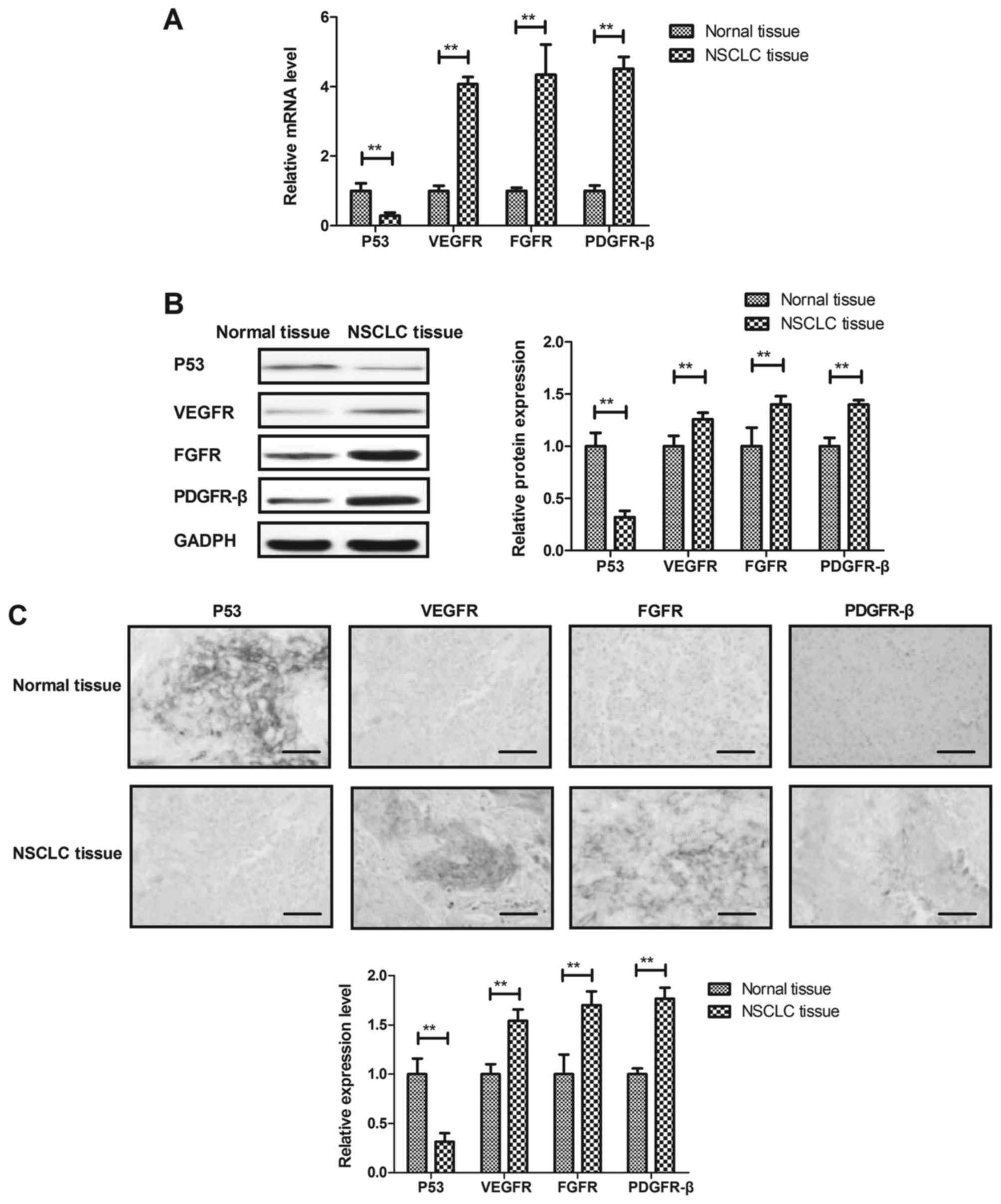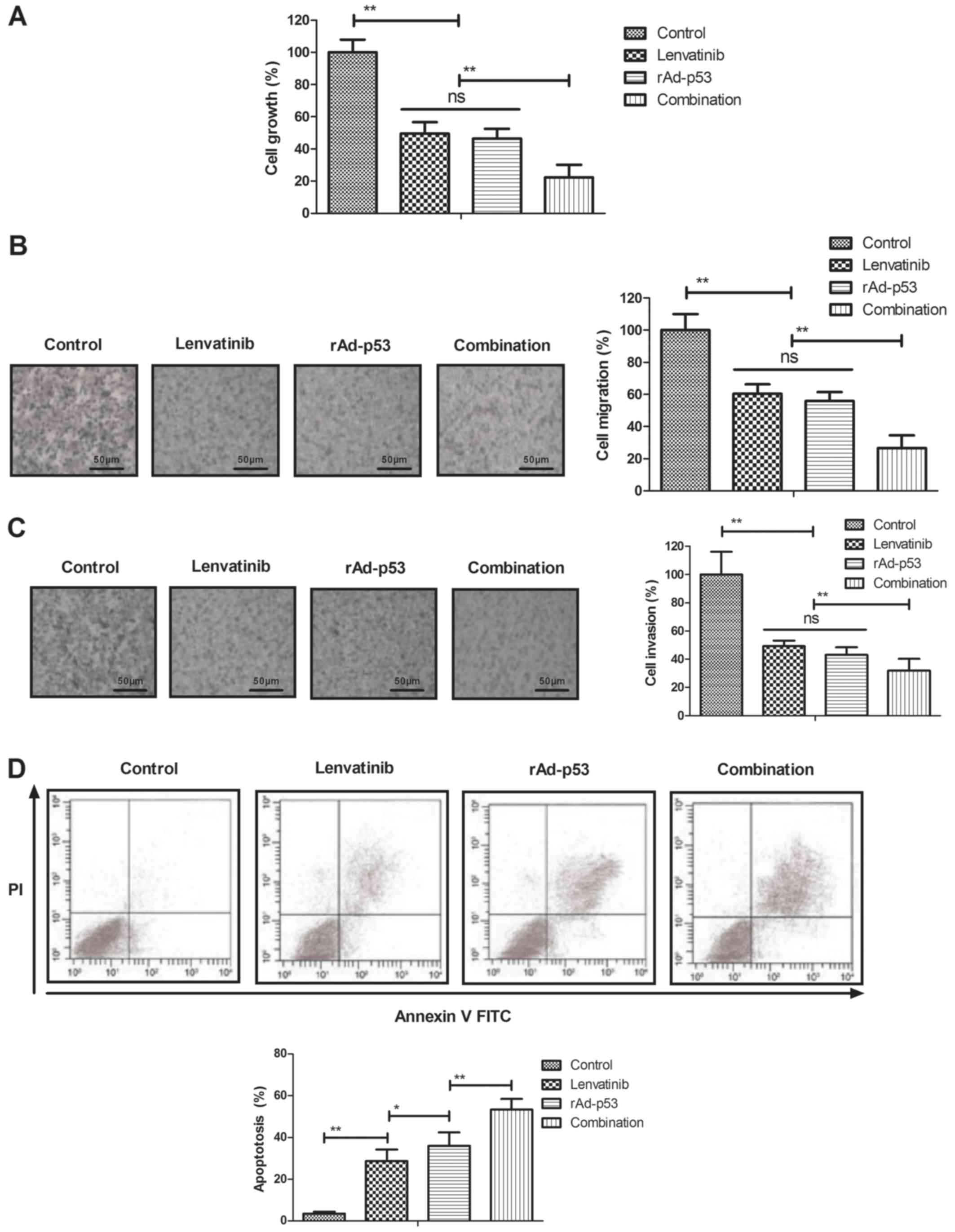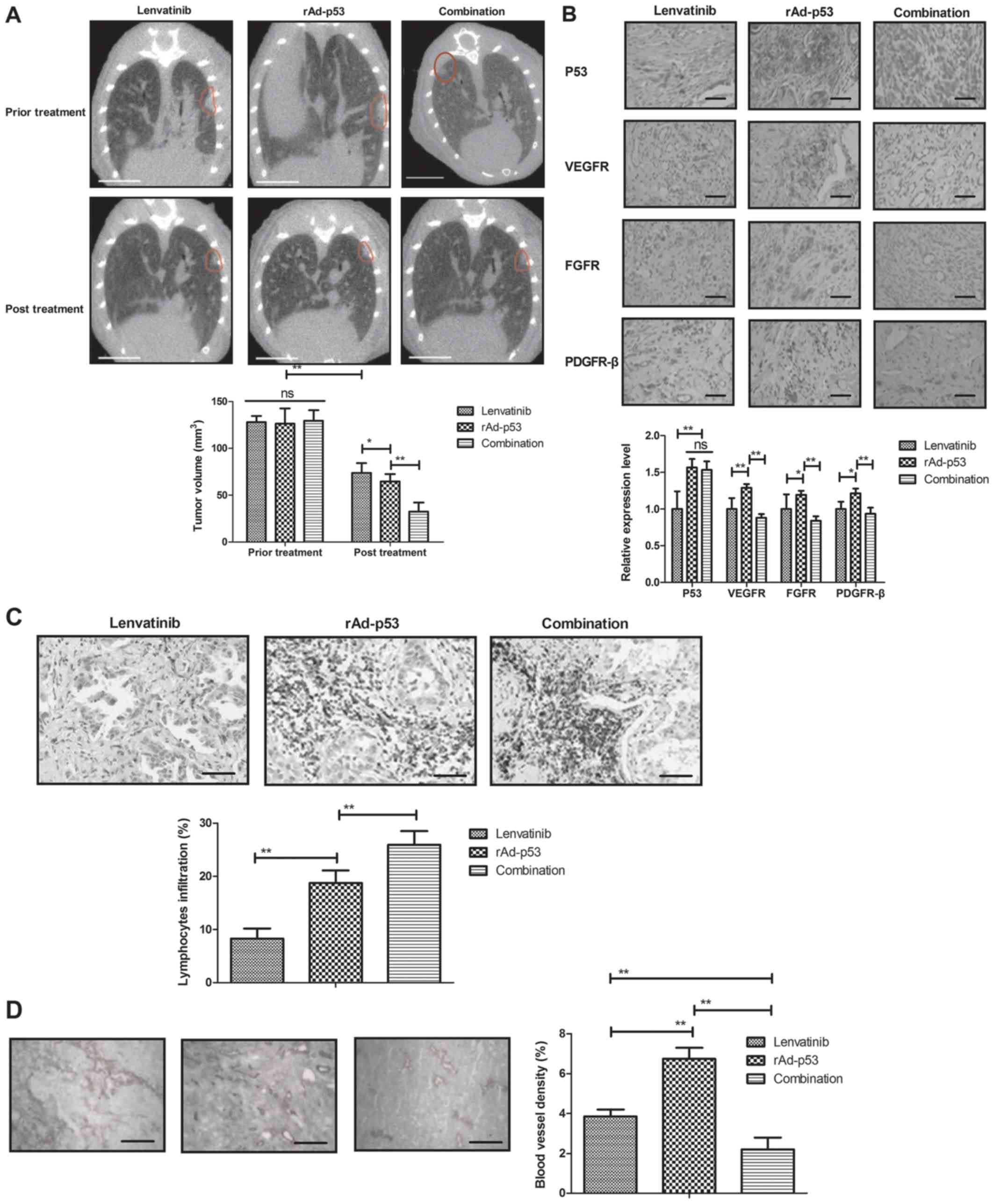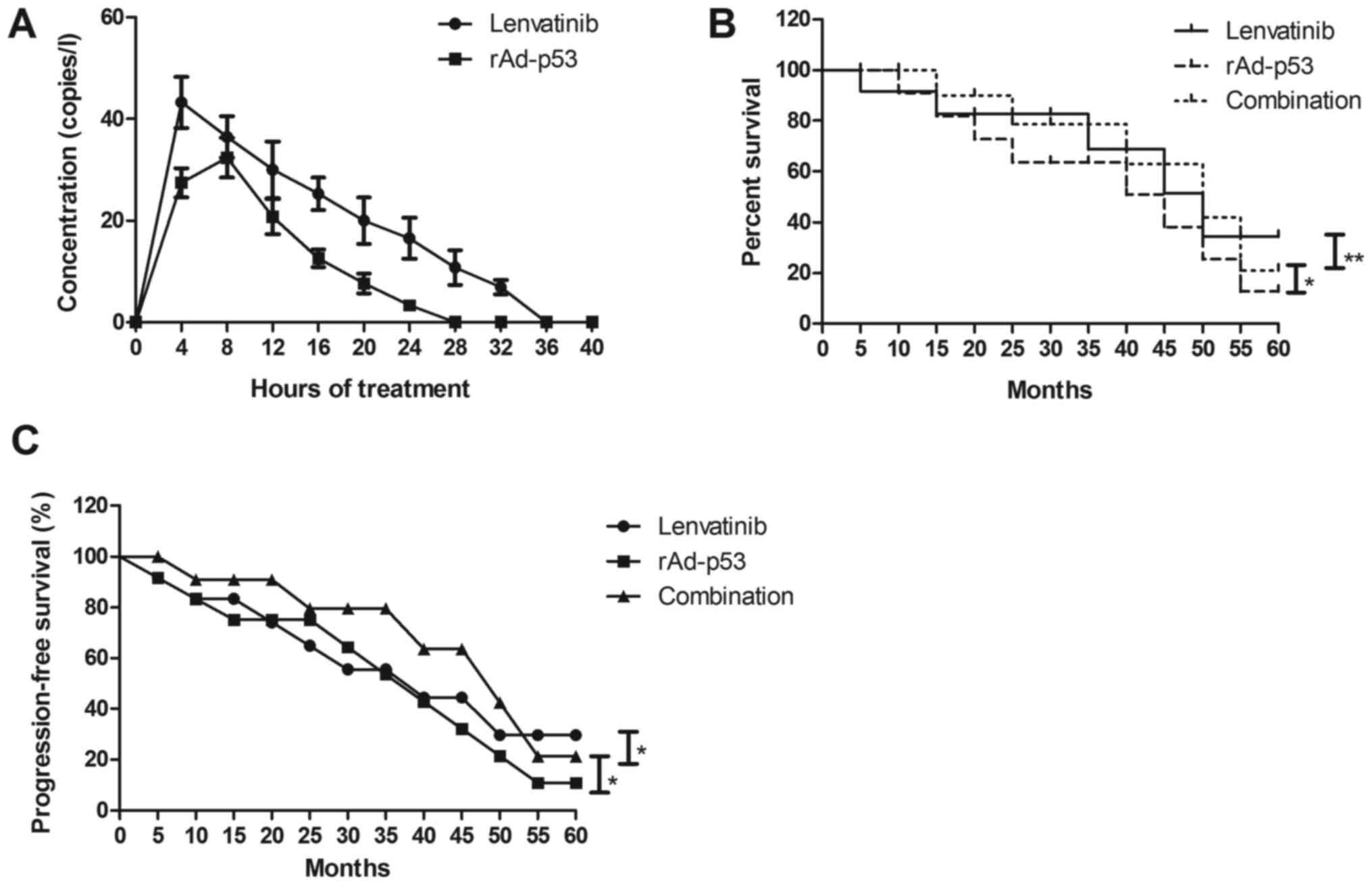|
1
|
Isobe H, Mori K, Minato K, Katsura H,
Taniguchi K, Arunachalam A, Kothari S, Cao X and Kato T: Real-world
practice patterns for patients with advancednon-small cell lung
cancer: Multicenter retrospective cohort study in Japan. Lung
Cancer (Auckl). 8:191–206. 2017.PubMed/NCBI
|
|
2
|
Prince RM, Atenafu EG and Krzyzanowska MK:
Hospitalizations during systemic therapy for metastatic lung
cancer: A systematic review of real world vs clinical trial
outcomes. JAMA Oncol. 1:1333–1339. 2015. View Article : Google Scholar : PubMed/NCBI
|
|
3
|
Brody H: Lung cancer. Nature. 513:S12014.
View Article : Google Scholar : PubMed/NCBI
|
|
4
|
Moro-Sibilot D, Smit E, de Castro Carpeño
J, Lesniewski-Kmak K, Aerts JG, Villatoro R, Kraaij K, Nacerddine
K, Dyachkova Y, Smith KT, et al: Non-small cell lung cancer
patients with brain metastases treated with first-line
platinum-doublet chemotherapy: Analysis from the European FRAME
study. Lung Cancer. 90:427–432. 2015. View Article : Google Scholar : PubMed/NCBI
|
|
5
|
Barnett SA, Downey RJ, Zheng J, Plourde G,
Shen R, Chaft J, Akhurst T, Park BJ and Rusch VW: Utility of
routine PET imaging to predict response and survival after
induction therapy for non-small cell lung cancer. Ann Thorac Surg.
101:1052–1059. 2016. View Article : Google Scholar : PubMed/NCBI
|
|
6
|
Cadranel J, Park K, Arrieta O, Pless M,
Bendaly E, Patel D, Sasane M, Nosal A, Swallow E, Galebach P, et
al: Characteristics, treatment patterns and survival among ALK+
non-small cell lung cancer (NSCLC) patients treated with
crizotinib: A chart review study. Lung Cancer. 98:9–14. 2016.
View Article : Google Scholar : PubMed/NCBI
|
|
7
|
Saadeddin A: Radiotherapy for NSCLC:
Review of conventional and new treatment techniques. J Infect
Public Health. 5 Suppl 1:S45–S49. 2012. View Article : Google Scholar : PubMed/NCBI
|
|
8
|
van Meerbeeck JP and Surmont VF: Stage
IIIA-N2 NSCLC: A review of its treatment approaches and future
developments. Lung Cancer. 65:257–267. 2009. View Article : Google Scholar : PubMed/NCBI
|
|
9
|
Bianco A, Tridico F, Rebecchi F, Contessa
L, Fusca M, Calello G, Monticone C, De Rocca C, Suffat Panier L,
Giaccone C and Suffat Panier P: Adrenal synchronous metastasis from
non small cell lung carcinoma (NSCLC): Combined surgical treatment?
Case report and review of the literature. Minerva chir. 56:535–537.
2001.(In Italian). PubMed/NCBI
|
|
10
|
Li Y, Li LJ, Wang LJ, Zhang Z, Gao N,
Liang CY, Huang YD and Han B: Selective intra-arterial infusion of
rAd-p53 with chemotherapy for advanced oral cancer: a randomized
clinical trial. BMC Med. 12:162014. View Article : Google Scholar : PubMed/NCBI
|
|
11
|
Buller RE, Runnebaum IB, Karlan BY,
Horowitz JA, Shahin M, Buekers T, Petrauskas S, Kreienberg R,
Slamon D and Pegram M: A phase I/II trial of rAd/p53 (SCH 58500)
gene replacement in recurrent ovarian cancer. Cancer Gene Ther.
9:553–566. 2002. View Article : Google Scholar : PubMed/NCBI
|
|
12
|
Liu K, Zhao J, Jiang H, Ma J, Tan J, Pei Y
and Chen J: A patient with a large intrathoracic malignant
schwannoma who showed a complete clinical response to
rAd-p53-combined with radiotherapy. Anticancer Drugs. 26:902–906.
2015. View Article : Google Scholar : PubMed/NCBI
|
|
13
|
Chen GX, Zheng LH, Liu SY and He XH:
rAd-p53 enhances the sensitivity of human gastric cancer cells to
chemotherapy. World J Gastroenterol. 17:4289–4297. 2011. View Article : Google Scholar : PubMed/NCBI
|
|
14
|
Du CH, Wu Z and Xu J: The combination of
recombinant rAd-p53 and adriamycin for management of primary drug
resistance in chemotherapy of lung squamous cell cancer. Zhonghua
Jie He He Hu Xi Za Zhi. 29:622–624. 2006.(In Chinese). PubMed/NCBI
|
|
15
|
Guan YS, Liu Y, Zou Q, He Q, La Z, Yang L
and Hu Y: Adenovirus-mediated wild-type p53 gene transfer in
combination with bronchial arterial infusion for treatment of
advanced non-small-cell lung cancer, one year follow-up. J Zhejiang
Univ Sci B. 10:331–340. 2009. View Article : Google Scholar : PubMed/NCBI
|
|
16
|
Takasu S, Mutoh M, Takahashi M and
Nakagama H: Lipoprotein lipase as a candidate target for cancer
prevention/therapy. Biochem Res Int. 2012:3986972012. View Article : Google Scholar : PubMed/NCBI
|
|
17
|
Miyazono K: Ectodomain shedding of HB-EGF:
A potential target for cancer therapy. J Biochem. 151:1–3. 2012.
View Article : Google Scholar : PubMed/NCBI
|
|
18
|
Sebens S and Schafer H: The tumor stroma
as mediator of drug resistance-a potential target to improve cancer
therapy? Curr Pharm Biotechnol. 13:2259–2272. 2012. View Article : Google Scholar : PubMed/NCBI
|
|
19
|
O'Reilly A and Larkin J: Lenvatinib for
use in combination with everolimus for the treatment of patients
with advanced renal cell carcinoma following one prior
anti-angiogenic therapy. Expert Rev Clin Pharmacol. 10:251–262.
2017.PubMed/NCBI
|
|
20
|
Kuznar W: Lenvatinib extends survival in
metastatic renal-cell carcinoma. Am Health Drug Benefits.
8:182015.PubMed/NCBI
|
|
21
|
Nishio M, Horai T, Horiike A, Nokihara H,
Yamamoto N, Takahashi T, Murakami H, Yamamoto N, Koizumi F, Nishio
K, et al: Phase 1 study of lenvatinib combined with carboplatin and
paclitaxel in patients with non-small-cell lung cancer. Br J
Cancer. 109:538–544. 2013. View Article : Google Scholar : PubMed/NCBI
|
|
22
|
Nagashima S, Matsuo S, Takahashi M,
Umemoto Y, Hirano T, Enomoto K, Sakurai K and Amano S:
Effectiveness of lenvatinib for thyroid cancer with lung Metastases
-report of a case. Gan To Kagaku Ryoho. 43:2121–2123. 2016.(In
Japanese). PubMed/NCBI
|
|
23
|
Halim NHA, Zakaria N, Satar NA and Yahaya
BH: Isolation and characterization of cancer stem cells of the
non-small-cell lung cancer (A549) cell line. Methods Mol Biol.
1516:371–388. 2016. View Article : Google Scholar : PubMed/NCBI
|
|
24
|
Livak KJ and Schmittgen TD: Analysis of
relative gene expression data using real-time quantitative PCR and
the 2(-Delta Delta C(T)) method. Methods. 25:402–408. 2001.
View Article : Google Scholar : PubMed/NCBI
|
|
25
|
Deng B, Sun T, Tang B, Tao S, Kang P, Qian
K, Jiang B, Li K, Li K, Zhou J, et al: Surgery combined with
adenoviral p53 gene therapy for treatment of non-small cell lung
cancer: A phase II study. Oncotarget. 8:107089–107095. 2017.
View Article : Google Scholar : PubMed/NCBI
|
|
26
|
Ghantous Y, Naddaf R, Barak M, Abd-Elraziq
M and AbuEln-Naaj I: The role of fine needle aspiration in the
diagnosis of parotid gland tumors: Correlation with preoperative
computerized tomography tumor size. J Craniofac Surg. 27:e192–e196.
2016. View Article : Google Scholar : PubMed/NCBI
|
|
27
|
Solbach C, Roller M, Peters S, Nicoletti
M, Kaufmann M and Knecht R: Pituitary tumor-transforming gene
(PTTG): A novel target for anti-tumor therapy. Anticancer Res.
25:121–125. 2005.PubMed/NCBI
|
|
28
|
Mayor S: Lenvatinib improves survival in
refractory thyroid cancer. Lancet Oncol. 16:e1102015. View Article : Google Scholar : PubMed/NCBI
|
|
29
|
Xie Q, Liang BL, Wu YH, Zhang J, Chen MW,
Liu HY, Gu XF and Xu J: Synergistic anticancer effect of rAd/P53
combined with 5-fluorouracil or iodized oil in the early
therapeutic response of human colon cancer in vivo. Gene.
499:303–308. 2012. View Article : Google Scholar : PubMed/NCBI
|
|
30
|
Luo SH, Zheng CS, Feng GS, Sun XM, Zhou
GF, Liang HM, Xia XW and Fang JL: Experimental studies of rAd-p53
injection by interventional approach for the treatment of rabbit
VX2 liver cancer. Zhonghua Gan Zang Bing Za Zhi. 18:502–505.
2010.(In Chinese). PubMed/NCBI
|
|
31
|
Lee H, Kim Y, Jeong JH, Ryu JH and Kim WY:
ATM/CHK/p53 pathway dependent chemopreventive and therapeutic
activity on lung cancer by pterostilbene. PLoS One.
11:e01623352016. View Article : Google Scholar : PubMed/NCBI
|
|
32
|
Li W, Yang Y, Ouyang Z, Zhang Q, Wang L,
Tao F, Shu Y, Gu Y, Xu Q and Sun Y: Xiao-Ai-Ping, a TCM injection,
enhances the antigrowth effects of cisplatin on lewis lung cancer
cells through promoting the infiltration and function of CD8(+) T
lymphocytes. Evid Based Complement Alternat Med. 2013:8795122013.
View Article : Google Scholar : PubMed/NCBI
|
|
33
|
Jia J, Dellinger AE, Weiss ES, Bulusu A,
Rushing C, Li H, Howard LA, Kaplan N, Pang H, Hurwitz HI and Nixon
AB: Direct Evidence of Target Inhibition with Anti-VEGF, EGFR and
mTOR Therapies in a Clinical Model of Wound Healing. Clin Cancer
Res. 21:3442–3452. 2015. View Article : Google Scholar : PubMed/NCBI
|
|
34
|
Shibuya M: Vascular endothelial growth
factor (VEGF) and its receptor (VEGFR) signaling in angiogenesis: A
crucial target for anti- and pro-angiogenic therapies. Genes
Cancer. 2:1097–1105. 2011. View Article : Google Scholar : PubMed/NCBI
|
|
35
|
Canavese M, Altruda F, Ruzicka T and
Schauber J: Vascular endothelial growth factor (VEGF) in the
pathogenesis of psoriasis-a possible target for novel therapies? J
Dermatol Sci. 58:171–176. 2010. View Article : Google Scholar : PubMed/NCBI
|
|
36
|
Tohyama O, Matsui J, Kodama K, Hata-Sugi
N, Kimura T, Okamoto K, Minoshima Y, Iwata M and Funahashi Y:
Antitumor activity of lenvatinib (e7080): An angiogenesis inhibitor
that targets multiple receptor tyrosine kinases in preclinical
human thyroid cancer models. J Thyroid Res. 2014:6387472014.
View Article : Google Scholar : PubMed/NCBI
|


















